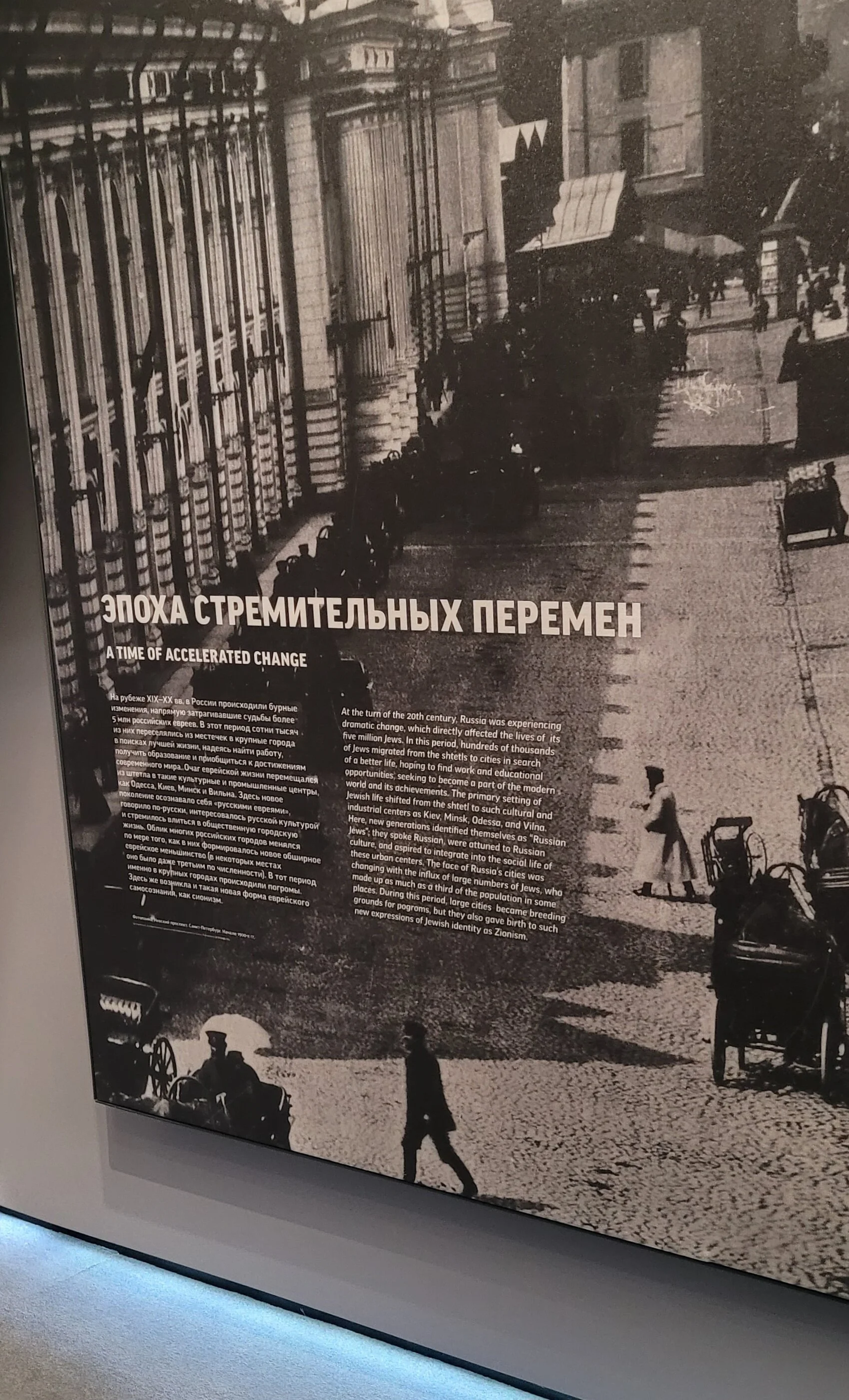Events & Exhibitions
Working at the Jewish Museum and Tolerance Center in Moscow, Russia, was no ordinary job; it was a transformative experience that deepened my understanding of storytelling.
I was contracted as a copywriter and a translator. My role primarily involved crafting, proofreading, fact-checking, translating, and editing text. Nothing out of the ordinary and certainly nothing I hadn't done before. Since publishing my first article at age 14, I've spent a decade writing all manner of texts - film reviews, speeches, magazine articles, blog posts, essays, and the occasional fictional short story. But the subject matter! I had never written about anything quite as emotional, significant, or important as the history of Pogroms or the Holocaust.
I felt like a gemcutter who had spent a decade training on synthetic cubic zirconia rough, maybe cut a few precious gemstones, and was just handed an exceptional emerald. Mesmerizing color, astounding size, certainly unique and priceless, but also one wrong move - and it would shatter.
How do you preserve the history of Jewry and adapt it for a family-friendly format, especially when so many historical events are clearly not suitable for the sensitive reader? To me, the task seemed insurmountable.
The task was not only decidedly surmountable but also illuminating and, in many ways, uplifting. The excellent team at the Research Department of the museum provided endless support and hot tea as I waded through the most horrific pages of human history.
I found out that no story, even the scariest and most heartbreaking one, can exist in a vacuum. Humans simply cannot exist in a hopeless world, where there seems to be no hope - they create some. They find ways of persevering even when all the odds are stacked against them. And that was the story we told in the museum.
Being part of a highly qualified team of storytellers was an exhilarating and humbling experience. I thought a story was words on a sheet of paper, maybe a few images thrown in for good measure. I learned that a story told in a museum is everything - it starts with the museum grounds and the exterior of the building, it is the ticket booth, it is the ceilings, the smell, the ambient temperature. Every element of the experience is more than it seems. Lighting is not just illumination - it is a brush that paints patterns on the floor and strategically highlights specific parts of the exhibition, guiding the visitor's gaze and emotions.
Through my work, I came to appreciate that storytelling went beyond the confines of text on a page. It was about creating an environment, a sensory experience, and an emotional connection — or, a user experience, if you will. The museum’s storytelling transcended language barriers and cultural differences, touching the hearts and minds of people from all walks of life.
It was a lesson that forever changed my perspective as a content marketing specialist, reminding me that in the world of storytelling, every detail matters, and every element contributes to the narrative's resonance with the audience. This experience guided my later work on trade shows and events and was pivotal to my professional development.




